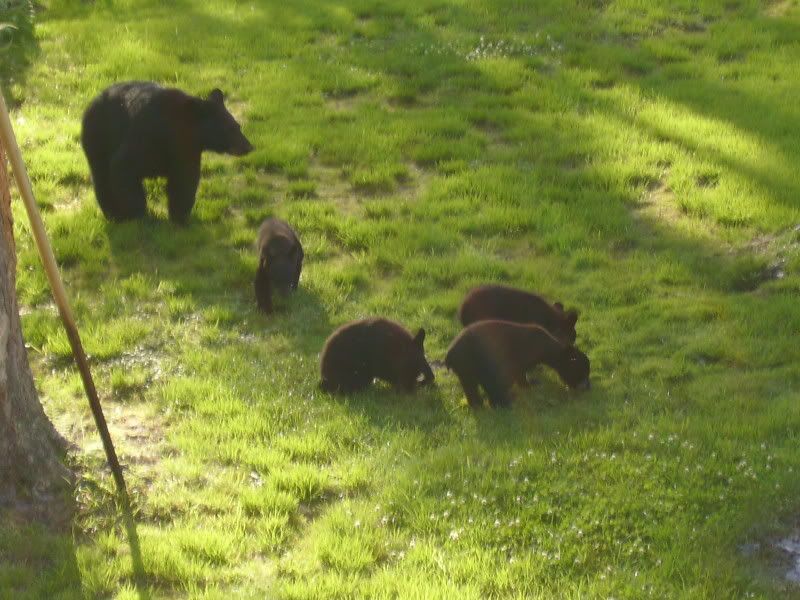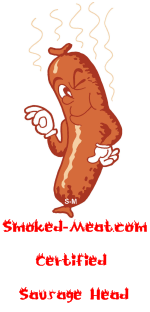The reason for this query is a batch of Summer Sausage I have in the fermentation chamber right now. I will be switching over to hot smoking later this morning. I used venison, lamb and wild pork. The wild pork is the questionable material. The pork has been frozen to -18° for six months. I included the wild pork after reading this
The pork I am using was definitely less than 6 inches in thickness, but even in group 2 my pork is way over the minimum time in freezing. The pork in question is definitely NOT from a northern climate and has probable never seen snow...in Florida. It's not written clearly butt I believe the freezing resistant tric is found in bear and in particular game from the far North (verrry cold).
http://edis.ifas.ufl.edu/fs153
Table 3.
Minimum time and temperature combinations for the heat treatment of all pork muscle tissue, per USDA mandate,
Minimum Internal Temperature Minimum Time (min)
140 1
142 1
144 instant
So I should be safe hot smoking to 145°, 150° internal? (above the thermal death point of the organism (137°F)). If I read this stuff correctly, but I had to look again this morning cause they always say pork, not wild pork.
Just a double check, maybe I should take it to 170°, but that will render the fat out...
5.2.5. Trichinosis
Details on trichinosis can be found in a publication by the National Pork Producers Council (Gamble) and on trichinosis statistics in the USA (CDC 1988). Trichinosis is an infestation of trichinae, or Trichinella spiralis or other Trichinella spp. The parasites invade the muscles causing severe pain and edema. It can be avoided by ensuring that cooked pork or certain wild game meat reaches an internal temperature of 150°F or more. Freezing the pork according to the following chart also can kill trichinae:
Table 5.1. Freezing Pork to Kill Trichinae Freezer Temperature
Group 1 Days
5°F 20
-10°F 10
-20°F 6
Group 2 Days
5°F 30
-10°F 20
-20°F 12
Group 1 comprises product in separate pieces not exceeding 6" in thickness or arranged on separate racks with the layers not exceeding 6" in depth. Group 2 comprises product in pieces, layers or within containers the thickness of which exceeds 6" but not 27" (US FDA 1999).
Details on trichinosis can be found in a publication by the National Pork Producers Council (Gamble) and on trichinosis statistics in the USA (CDC 1988). Trichinosis is an infestation of trichinae, or Trichinella spiralis or other Trichinella spp. The parasites invade the muscles causing severe pain and edema. It can be avoided by ensuring that cooked pork or certain wild game meat reaches an internal temperature of 150°F or more. Freezing the pork according to the following chart also can kill trichinae:
Table 5.1. Freezing Pork to Kill Trichinae Freezer Temperature
Group 1 Days
5°F 20
-10°F 10
-20°F 6
Group 2 Days
5°F 30
-10°F 20
-20°F 12
Group 1 comprises product in separate pieces not exceeding 6" in thickness or arranged on separate racks with the layers not exceeding 6" in depth. Group 2 comprises product in pieces, layers or within containers the thickness of which exceeds 6" but not 27" (US FDA 1999).
http://edis.ifas.ufl.edu/fs153
Table 3.
Minimum time and temperature combinations for the heat treatment of all pork muscle tissue, per USDA mandate,
Minimum Internal Temperature Minimum Time (min)
140 1
142 1
144 instant
So I should be safe hot smoking to 145°, 150° internal? (above the thermal death point of the organism (137°F)). If I read this stuff correctly, but I had to look again this morning cause they always say pork, not wild pork.
Just a double check, maybe I should take it to 170°, but that will render the fat out...






Comment